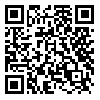BibTeX | RIS | EndNote | Medlars | ProCite | Reference Manager | RefWorks
Send citation to:
URL: http://jhsw.tums.ac.ir/article-1-1-en.html
Introduction: In last decades, due to the increase in the number of VDT works prevalence of musculoskeletal disorders has increased among users. One of the main risk factors for those problems might be related to the computer keyboards. Keyboards might lead to these problems, in different ways. Keyboard geometry is one of the main ways. As a result, the various types and shapes of personal computer keyboards have designed in order to provide a neutral or relaxed posture in the wrist and forearm areas. Slanted, sloped and tilted keyboards are the most important alternative keyboard designs for this mean.
.
Material and Method: In this paper, with a systematic approach, related studies were searched in authentic databases and finally eleven studies met to our inclusion criteria for review.
.
Result: findings in different studies showed that alternative keyboards clearly can provide an ergonomic neutral posture for the wrist and forearm. As a specific objective in the study, it was found that the best keyboard, to form an ideal posture for the wrist and forearm is ‘NIOSH keyboard‘ because of its ergonomic design.
.
Conclusion: Considering the positive effect of the alternative keyboards on the wrist and forearm postures, it is concluded that use of the alternative keyboards can decrease risk factors related to the wrist and forearm postures. Results can be applied by personal computer users, computer designers, occupational hygienists and ergonomists.
| Rights and permissions | |
 |
This work is licensed under a Creative Commons Attribution-NonCommercial 4.0 International License. |



